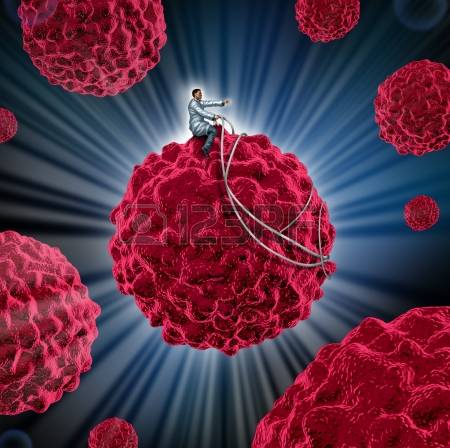








Radation Therapy
Cancer cells multiply faster than normal cells in the body. Because radiation is most harmful to quickly growing cells, radiation therapy damages cancer cells more than normal cells. This prevents the cancer cells from growing and dividing, and leads to cell death.
Radiation therapy is used to fight many types of cancer. Sometimes, radiation is the only treatment needed. It may also be used to:
⦁ Shrink a tumor as much as possible before surgery
⦁ Help prevent the cancer from coming back after surgery or chemotherapy
⦁ Relieve symptoms caused by a tumor
⦁ Treat cancers that cannot be removed with surgery
TYPES OF RADIATION THERAPY
External beam radiation is the most common form. This method carefully aims high-powered x-rays or particles directly at the tumor from outside of the body.
Internal beam radiation is placed inside of your body.
⦁ One method uses radioactive seeds that are placed directly into or near the tumor. This method is called brachytherapy, and is used to treat ⦁ prostate cancer. It is used less often to treat breast, cervical, lung, and other cancers.
⦁ Another method involves receiving radiation by drinking it, swallowing a pill, or through an IV. Liquid radiation travels throughout your body, seeking out and killing cancer cells. Thyroid cancer may be treated this way.
SIDE EFFECTS OF RADIATION THERAPY
Radiation therapy can also damage or kill healthy cells. The death of healthy cells can lead to side effects.
These side effects depend on the dose of radiation, and how often you have the therapy. External beam radiation may cause skin changes, such as hair loss, red or burning skin, thinning of skin tissue, or even shedding of the outer layer of skin.
Other side effects depend on the part of body receiving radiation:
Other side effects depend on the part of body receiving radiation:
Breast radiation - discharge
When you have radiation treatment for cancer, your body goes through some changes.
2 weeks after your first treatment:
⦁ It may be hard to swallow, or swallowing may hurt.
⦁ Your throat may feel dry or scratchy.
⦁ You may develop a cough.
⦁ Your skin over the treated area may turn red, start to peel, or get dark, or it may itch.
Most of these changes should go away around 4 to 6 weeks after the radiation treatment is over.
You may notice changes in the way your breast looks or feels (if you are getting radiation after a lumpectomy). These changes include:
⦁ Soreness or swelling in the area being treated. This should go away around 4 to 6 weeks after treatment is over.
⦁ The skin on your breast may become more sensitive or numb.
⦁ Skin and breast tissue may be thicker or firmer. The skin may be slightly darker.
⦁ After therapy, your breast may feel larger or smaller. Many women will not have any change in size.
⦁ You may notice these changes for up to 12 months after therapy starts.
Skin Care
When you have radiation treatment, a health care provider draws colored markings on your skin. DO NOT remove these markings. These show where to aim the radiation. If they come off, DO NOT redraw them. Tell your doctor if they come off. These must stay there until your treatments are done.
Take care of the treatment area:
⦁ Wash gently with lukewarm water only. DO NOT scrub. Pat your skin dry.
⦁ DO NOT use soaps.
⦁ Do not use lotions, ointments, makeup, perfumed powders, or other perfumed products on this area. Ask your doctor what is ok to use.
⦁ Keep the area that is being treated out of the direct sun.
⦁ DO NOT scratch or rub your skin.
Tell your provider if you have any break or opening in your skin. DO NOT put heating pads or ice bags on the treatment area. Wear loose-fitting clothing.
DO NOT wear a bra, or wear a loose-fitting bra with no underwire. Ask your doctor about wearing your breast prosthesis, if you have one.
Self-care
You need to eat enough protein and calories to keep your weight up while you are having radiation.
Tips to make eating easier:
⦁ Choose foods that you like.
⦁ Serve foods with gravy, broths, or sauces to make them easier to chew and swallow.
⦁ Eat small meals, and eat more often during the day.
⦁ Cut your food into small pieces.
⦁ Ask your doctor or dentist if artificial saliva might help you.
Ask your doctor about liquid food supplements. These can help you get enough calories. If pills are hard to swallow, try crushing them and mixing them with some ice cream or another soft food.
Watch out for these signs of swelling (edema) in your arm.
⦁ You have a feeling of tightness in your arm.
⦁ Rings on your fingers get tighter.
⦁ Your arm feels weak.
⦁ You have pain, aching, or heaviness in your arm.
⦁ Your arm is red, swollen, or there are signs of infection.
Ask your provider about exercises you can do to keep your arm moving freely.
Most people who get radiation treatment begin to feel tired after a few days. If you feel tired:
⦁ DO NOT try to do too much in a day. You will probably not be able to do everything you are used to doing.
⦁ Try to get more sleep at night. Rest during the day when you can.
⦁ Take a few weeks off work, or work less.
Alternate Names
Radiation - breast - discharge
References
Freedman GM. Radiation complications and their management. In: Bland KI, Copeland EM. The Breast: Comprehensive Management of Benign and Malignant Diseases. 4th ed. Philadelphia, PA: Elsevier Saunders; 2009:chap 67.
Zemen EM, Schreiber EC, Tepper JE. Basics of radiation therapy. In: Niederhuber JE, Armitage JO, Doroshow JH, et al., eds. Abeloff's Clinical Oncology. 5th ed. Philadelphia, PA: Elsevier Churchill Livingstone; 2013:chap 27.
- Home
- Vaginal infections and inflammation
- Threat to the Forests
- The Vinegar treatment for Thrush
- Treating Acid Environments
- Your Basic Travel Kit - Tummy Troubles
- Pamela L. Crowell on the Prevention and Therapy of Cancer by Dietary Monoterpenes
- Thrush (Candida) Case History
- Problems In Pregnancy
- The Work of Anne-Marie Giraud-Robert
- Thrush treatment for Men- Women
- Applications For Your Basic Care Kit - 4
- Fragrant Pharmacy
- Bites and Stings - General Action - Your Basic Travel Kit
- Whooping Cough
- Lymphoedema
- The journey
- Your Basic Travel Kit - Fevers
- Applications For Your Basic Care Kit - 3
- Aromatherapy-Cramps
- Your Basic Travel Kit - The Heat
- Aromatherapy-Articles-A-Z
- Verrucas and Warts
- Rabid Bites and Scratches - Your Basic Travel Kit
- Your Basic Travel Kit
- Wrinkles and Ageing Skin - Facial Scrubs
- Wrinkles and Ageing Skin - Cleansers
- Wrinkles and the Ageing Skin
- Fragrant way to Beauty - 2
- The Fragrant way to Beauty
- A-Z of Dance and Sports Injuries - 7
- A-Z of Dance and Sports Injuries - 6
- A-Z of Dance and Sports Injuries - 5
- A-Z of Sports and Dance Injuries - 4
- A-Z of Sports and Dance Injuries-3
- A-Z of Sports and Dance Injuries-2
- A-Z of Sports and Dance Injuries
- Aromatherapy - Locker Room Scents
- Aromatherapy- Stress & Sports - Jacuzzis
- Aromatherapy-stress & Sport - Saunas
- Aromatherapy - stress & Sport - Showers
- Stress and Sport - Aromatherapy
- Foot Care - 2 - Aromatherapy
- Foot Care - Aromatherapy
- MUSCLES-Aromatherapy
We have 62 guests and no members online

